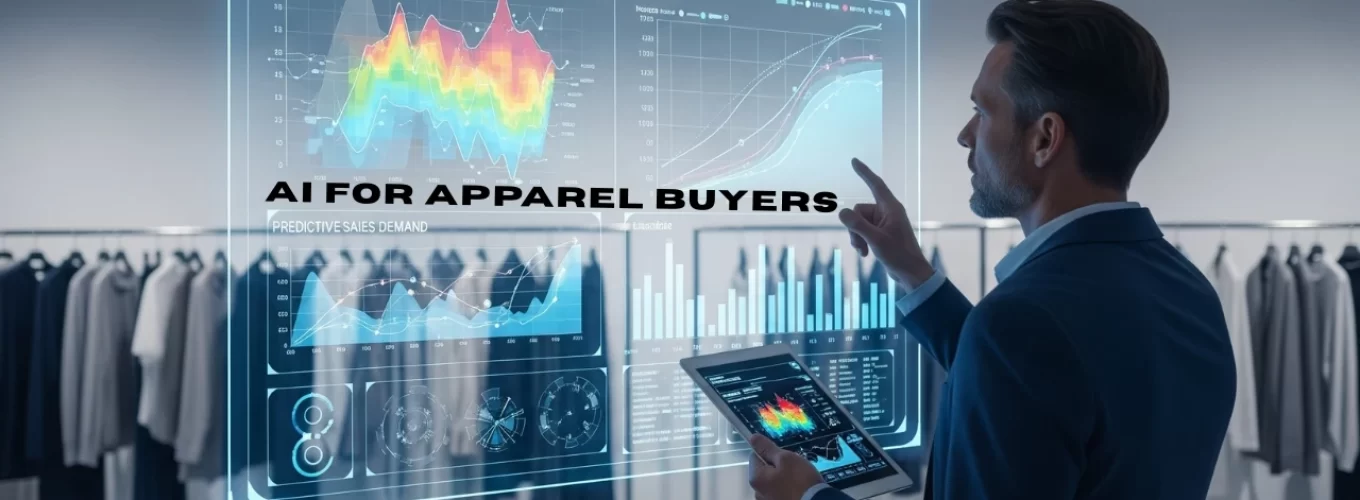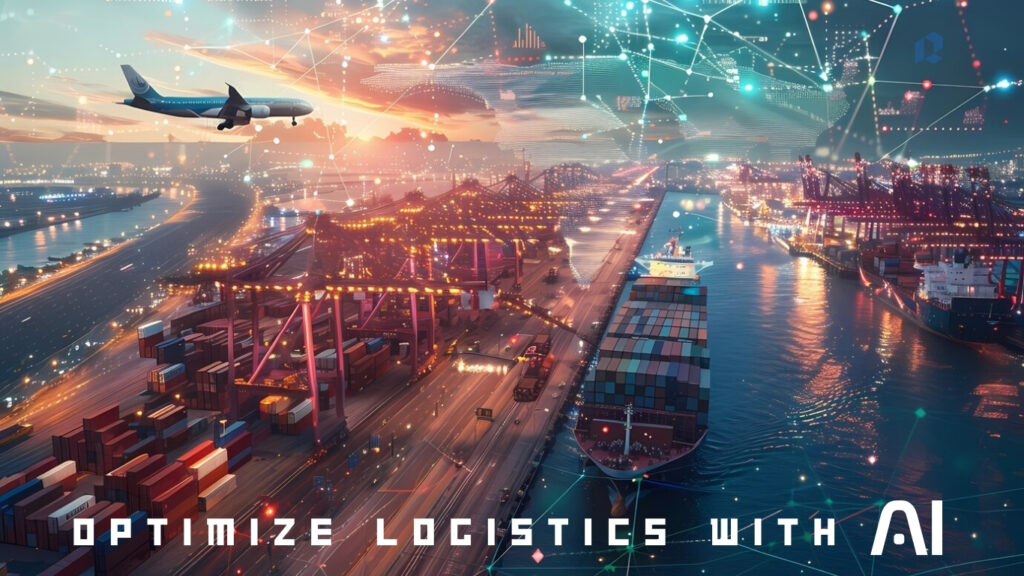
The fashion industry is undergoing a major transformation as artificial intelligence (AI) reshapes how apparel buyers forecast consumer demand. With shifting consumer preferences, fast-changing trends, and increasing pressure for sustainability, brands need precise demand forecasting to optimize inventory, reduce waste, and improve profitability.
AI-powered analytics provide real-time insights into buying behavior, helping apparel companies make data-driven decisions. This article explores how AI is revolutionizing demand forecasting, enabling fashion retailers and apparel buyers to stay ahead in a highly competitive market.
1. AI-Powered Data Collection and Market Analysis
Traditional demand forecasting relied on historical sales data, but AI enhances this process by analyzing vast datasets in real time. AI-powered machine learning models collect and interpret data from multiple sources, ensuring apparel buyers make accurate and timely purchasing decisions.
How AI Enhances Market Analysis
- Analyzing past and real-time sales data to identify emerging trends.
- Monitoring social media, search trends, and fashion publications, helping brands detect shifts in consumer preferences.
- Tracking macroeconomic indicators such as consumer spending trends and inflation rates¹.
AI-Driven Market Prediction Tools
- Google’s AI-powered fashion analytics, which predict consumer shopping behavior.
- IBM Watson’s AI retail forecasting, used by fashion retailers to understand seasonal demand.
- Stylumia AI, a fashion intelligence platform that analyzes real-time market trends.See how Stylumia’s AI-powered tech predicts fashion trends and drives sustainability in this video.
Future Of Fashion Prediction Is Here | Stylumia
Brands using AI-driven forecasting tools can reduce inventory risks and markdown losses, optimizing profitability.
2. Predicting Fashion Trends with AI Algorithms
AI helps apparel brands identify future fashion trends before they become mainstream, allowing buyers to make proactive sourcing decisions. Machine learning models analyze runway collections, celebrity fashion choices, and consumer sentiment to forecast demand.
How AI Predicts Fashion Trends
- AI models scan global fashion trends, assessing patterns across online platforms.
- Deep learning tools analyze color, fabric, and silhouette preferences from fashion archives.
- AI-based predictive analytics assess social media impact on fashion trends².
AI-Powered Trend Forecasting Platforms
- Heuritech, an AI-powered fashion trend forecasting platform, predicts consumer behavior based on Instagram and TikTok trends.
- Edited AI, which analyzes online product performance across e-commerce platforms.
- Fashion Snoops AI, a predictive intelligence tool for apparel buyers.
By leveraging AI-driven trend forecasting, fashion buyers can reduce unsold inventory, improving retail efficiency.
3. AI-Driven Demand Forecasting for Apparel Buyers
AI-powered demand forecasting helps apparel brands predict how much inventory they need, reducing the risks of overproduction and stockouts.
Why AI Demand Forecasting is a Game-Changer
- Traditional forecasting models rely on static historical data, but AI enables real-time forecasting.
- AI-driven tools account for variables such as weather, economic shifts, and regional buying trends.
Fashion retailers can adjust production schedules dynamically, preventing stock shortages or excess inventory.

AI Demand Forecasting Tools for Apparel Buyers
- SAP Fashion AI, which provides demand intelligence for global apparel brands.
- Blue Yonder AI, a predictive analytics tool optimizing inventory planning.
- Google Cloud AI for Fashion, helping retailers analyze purchase behavior patterns ³.
AI-powered forecasting reduces financial losses from misjudged inventory levels, ensuring apparel buyers meet consumer demand efficiently.
4. Personalization and AI-Driven Consumer Insights
AI allows fashion brands to personalize recommendations and predict individual consumer preferences, improving demand accuracy.
How AI Enhances Personalized Forecasting
- Machine learning algorithms analyze past purchase behavior to suggest customized product recommendations.
- AI-powered chatbots collect real-time data from consumers, improving demand predictions.
- Deep learning models track online shopping habits, helping brands adjust inventory strategies dynamically.
AI Tools for Personalized Demand Prediction
- Amazon’s AI-powered fashion recommendation engine, enhancing customer shopping experiences.
- Zalando AI, which predicts what consumers will buy based on browsing history.
- Stitch Fix AI, a fashion styling service that personalizes clothing selections ⁴.
By using AI-powered personalization, apparel brands can boost customer satisfaction and reduce product return rates.
5. AI-Optimized Supply Chain and Smart Inventory Management
AI is transforming supply chain efficiency by optimizing logistics and improving inventory tracking systems.
How AI Improves Supply Chain Management
- AI-powered forecasting tools predict supplier delays, preventing supply chain disruptions.
- Robotics and automation in warehouses improve efficiency, reducing manual errors.
- Blockchain-integrated AI tools enhance supply chain transparency and ethical sourcing compliance ⁵.

AI-Driven Inventory Management Systems
- Oracle AI Retail Cloud, which automates inventory tracking for fashion brands.
- IBM AI Watson Supply Chain, optimizing real-time inventory movement.
- Alibaba’s AI-powered logistics, ensuring fast fulfillment for fashion retailers.
AI-powered supply chain management reduces operational costs and ensures just-in-time inventory replenishment, improving overall apparel sourcing efficiency.
6. AI-Powered Price Optimization and Dynamic Pricing Strategies
AI is transforming pricing strategies in the fashion industry by enabling real-time price optimization based on demand, competitor analysis, and market fluctuations.
Why AI-Driven Pricing Matters
- Traditional pricing models rely on fixed seasonal markdowns, while AI allows for dynamic pricing adjustments.
- AI algorithms analyze consumer purchasing behavior, identifying the optimal price point for maximizing sales and profitability.
- Predictive pricing tools track supply chain costs and competitor pricing, allowing brands to stay competitive.
Key AI-Powered Pricing Strategies
- Dynamic pricing adjustments, where prices fluctuate based on demand signals.
- AI-based markdown optimization, reducing excess inventory while maintaining margins.
- Personalized pricing, offering discounts based on consumer shopping history ⁶.
Retailers like Amazon, Zara, and ASOS use AI-powered price optimization tools to ensure competitive pricing and increased sales.
7. AI in Reducing Fashion Waste and Overproduction
Overproduction is a major issue in the fashion industry, but AI is helping brands reduce waste by forecasting accurate inventory needs.
How AI Helps Minimize Overproduction
- Predictive analytics track real-time sales trends, allowing retailers to adjust production runs.
- AI-driven demand planning minimizes stock surplus, preventing unsold inventory from being discarded.
Virtual prototyping and AI-powered design enable brands to test styles before mass production ⁷.

Key AI Tools in Waste Reduction
- True Fit AI, reducing fashion returns by improving size accuracy.
- Higg Index AI, monitoring environmental impact across the supply chain.
- Browzwear AI, allowing designers to create virtual samples before physical production.
By integrating AI-powered forecasting, brands like H&M and Adidas have reduced excess stock, improving sustainability efforts.
8. AI-Powered Visual Recognition for Fashion Retailers
Visual AI is revolutionizing how apparel buyers identify trends and assess product demand through image-based analytics.
Why AI Visual Recognition is Growing
- Computer vision technology scans images from fashion runways, social media, and e-commerce platforms to predict style trends.
- AI recognizes product attributes such as fabric, fit, and design elements, improving cataloging and searchability.
- Retailers use AI to enhance product recommendations, aligning with visual-based consumer searches.
Key AI Visual Recognition Tools
- Google Lens for Fashion, allowing consumers to search for clothing via image recognition.
- Syte AI, improving visual search and recommendation engines for fashion e-commerce.
- Vue.ai, using AI-powered automation for fashion product tagging and styling suggestions ⁸.
Brands like Macy’s and Nordstrom utilize visual AI to improve customer experience and product discoverability.
9. AI-Enhanced Virtual Fitting Rooms and 3D Fashion Models
AI is improving the online shopping experience by integrating virtual fitting rooms and 3D digital fashion models, reducing return rates and increasing consumer confidence.
How AI-Powered Virtual Try-Ons Are Changing Shopping
- AI analyzes body measurements and past purchases, recommending the best-fitting sizes.
- 3D virtual models allow consumers to preview how clothes will fit, reducing guesswork.
- Augmented reality (AR) try-ons enhance the digital shopping experience, bridging the gap between in-store and online shopping.
Key AI Virtual Fitting Technologies
- Zalando AI Fit Assistant, providing size predictions based on personal data.
- Fit Analytics AI, improving fashion retailers’ virtual fitting accuracy.
- Perfect Corp AI, integrating AR-powered try-on solutions for fashion brands ⁹.
By using AI-powered virtual fitting rooms, brands like Nike and Uniqlo are reducing return rates and enhancing customer satisfaction.
10. AI in Fashion Supply Chain Risk Management
AI is helping apparel buyers identify supply chain risks, ensuring stability in sourcing, production, and logistics.
How AI Improves Supply Chain Risk Management
- Predictive AI detects potential supply chain disruptions, such as raw material shortages and geopolitical risks.
- Machine learning algorithms analyze shipping delays, optimizing logistics and supplier reliability.
- AI-powered fraud detection protects fashion businesses from counterfeiting and unethical sourcing practices.
Key AI-Powered Supply Chain Risk Tools
- Resilinc AI, monitoring global supply chain risks in real-time.
- Everstream AI, predicting supplier disruptions before they happen.
- SAP AI Risk Intelligence, helping brands manage logistics and sourcing risks ¹⁰.

With AI-driven risk prediction and supply chain optimization, brands like PVH Corp and Inditex are ensuring stable and sustainable fashion production.
RYZEAL’s Final Thoughts
AI is transforming fashion demand forecasting, pricing strategies, supply chain management, and customer experience. Apparel buyers who adopt AI-powered predictive analytics can reduce inventory waste, optimize pricing, and improve consumer engagement.
At RYZEAL SOURCING, we integrate AI-driven sourcing strategies to help brands stay ahead of market trends, improve operational efficiency, and maximize profitability.
The future of fashion belongs to brands that embrace AI, using data-driven insights to navigate demand, trends, and supply chain complexities with precision.
References
-
Business of Fashion. (2023). How inflation affects fashion retail and consumer spending. Retrieved from https://www.businessoffashion.com/articles/global-markets/how-inflation-affects-fashion-retail/
-
Forbes Tech Council. (2023). How social media drives fashion predictions. Retrieved from https://www.forbes.com/sites/forbestechcouncil/2023/06/28/how-social-media-drives-fashion-predictions/
-
Retail TouchPoints. (2023). How Google Cloud AI is transforming retail demand forecasting. Retrieved from https://www.retailtouchpoints.com/topics/digital-transformation/how-google-cloud-ai-is-transforming-retail
-
Wired. (2023). How AI is personalizing fashion retail and shopping experiences. Retrieved from https://www.wired.com/story/how-ai-is-personalizing-fashion-retail/
-
Forbes Tech Council. (2023). Blockchain’s role in fashion supply chains and transparency. Retrieved from https://www.forbes.com/sites/forbestechcouncil/2023/03/21/blockchain-in-fashion-supply-chains/
-
Forbes. (2023). The rise of AI in retail pricing strategies and dynamic pricing. Retrieved from https://www.forbes.com/sites/forbestechcouncil/2023/05/12/the-rise-of-ai-in-retail-pricing-strategies/
-
Business of Fashion. (2023). How AI is helping fashion tackle overproduction and waste. Retrieved from https://www.businessoffashion.com/articles/sustainability/how-ai-is-helping-fashion-tackle-overproduction/
-
Retail Dive. (2023). How visual AI is transforming fashion shopping and consumer trends. Retrieved from https://www.retaildive.com/news/how-visual-ai-is-transforming-fashion-shopping/
-
Business of Fashion. (2023). How AI is powering the future of virtual fitting rooms. Retrieved from https://www.businessoffashion.com/articles/technology/how-ai-is-powering-the-future-of-virtual-fitting-rooms/
McKinsey & Company. (2023). How AI is revolutionizing fashion supply chains and risk management. Retrieved from https://www.mckinsey.com/industries/retail/our-insights/how-ai-is-revolutionizing-fashion-supply-chains
